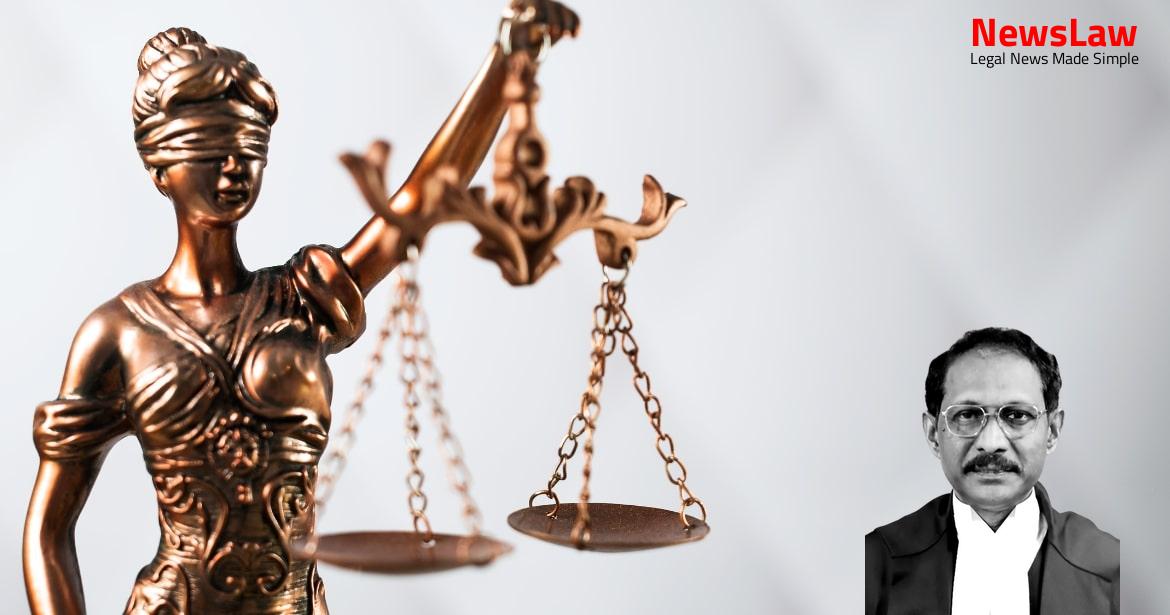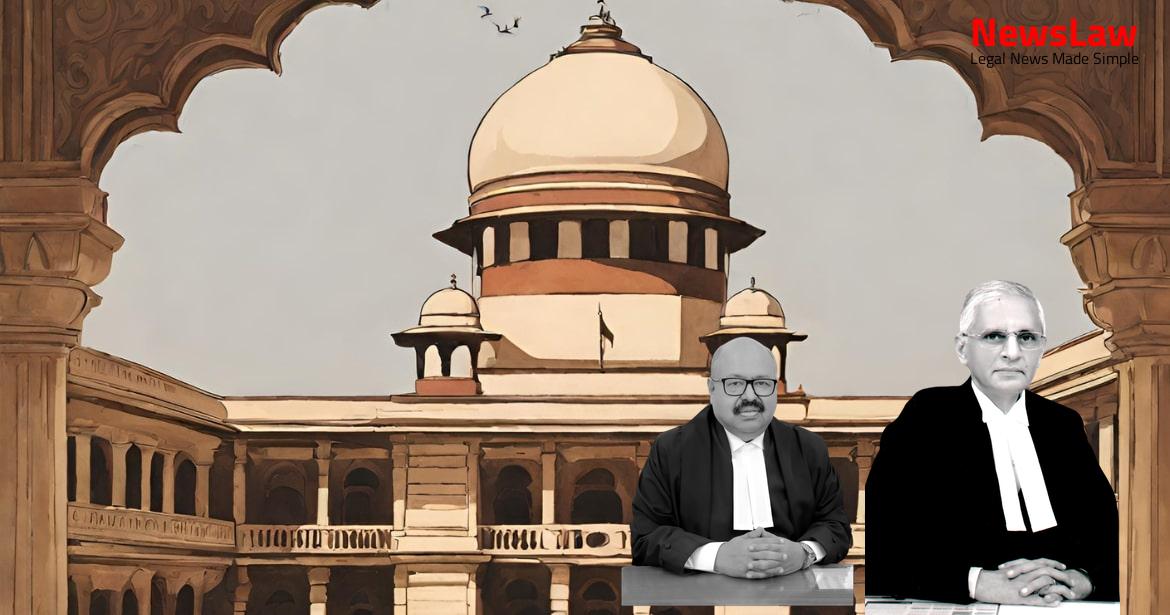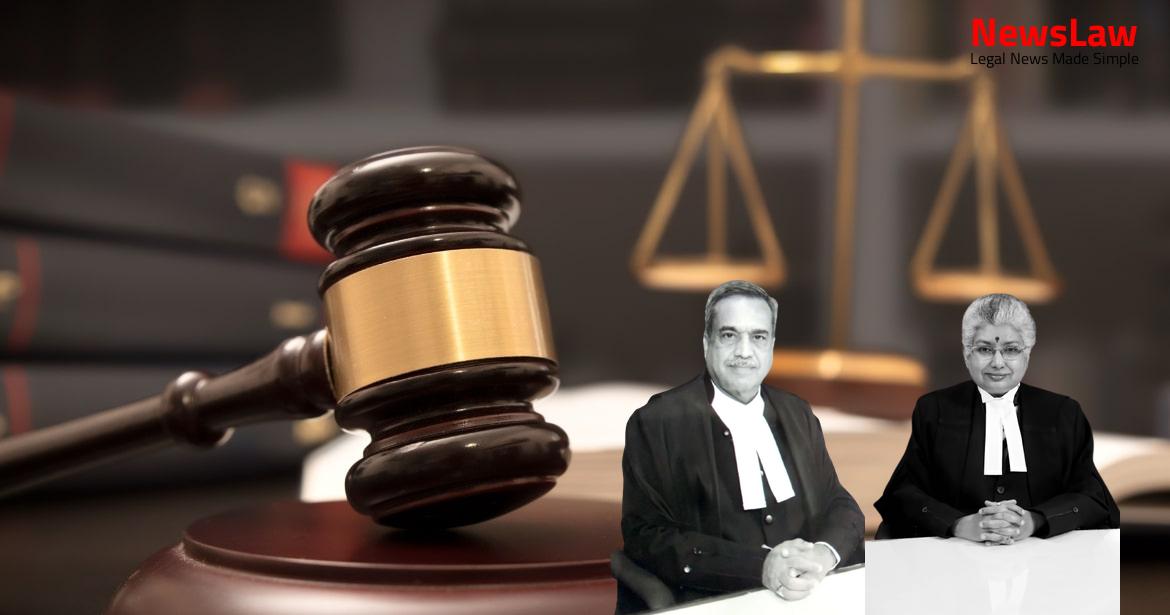The sole appellant in the latter appeal was the first appellant in Criminal Appeal No.7 of 2004 and he was the first accused in Sessions Trial No.80 of 2002. The prosecution case, in nutshell, is as follows: – On 12.12.2001 at about 5.00 pm, the deceased along with a friend went to Indira Gandhi Ward at Bandhara where the house of Chintaman Giddu Gatey (PW-8) situates.
While so, appellant in the latter appeal viz., accused No.1 questioned the deceased as to why he along with his friend Parag Sukhdeve assaulted his brother. Though, the deceased denied assault on his brother, the appellant in the latter appeal (the first 3 accused) continued to say that the deceased did and assaulted his brother. To the north of the said National Highway and at a distance of about 10 kilometers from Bhandara there was another road leading to village Paladi and on the side of the said Bhandara-Paladi road, at about by one kilometer from National Highway No.6, they stopped their motorcycles and started assaulting the deceased using sharp weapons. After considering the 4 circumstances relied on by the Trial Court and despite its reservation against some of the procedures followed the High Court confirmed the conviction and sentence imposed on appellants by the Trial Court holding that certain proven circumstances are material circumstances and would complete the requisite chain. Sometimes the circumstances which are sought to be proved against the accused for purpose of establishing the charge are planted by the elements hostile to the accused who find out witnesses to fill up the gaps in the chain of circumstances. It is true that the chain of events proved by the prosecution must show that within all human probability the offence has been committed by the accused, but the court is expected to consider the total cumulative effect of all the proved facts along with the motive suggested by the prosecution which induced the accused to follow a particular path. The law relating to circumstantial evidence no longer remains res integra
and it has been 6 held by catena of decisions of this Court that the circumstances proved should lead to no other inference except that of the guilt of the accused so that, the accused can be convicted of the offences charged.
It may be stated as a rule of caution that before the court records conviction on the basis of circumstantial evidence, it must satisfy itself that the circumstances from which inference of guilt could be drawn have been established by unimpeachable evidence and the circumstances unerringly point to the guilt of the accused and further, all the circumstances taken together are incapable of any explanation on any reasonable hypothesis save the guilt of the accused.”
In the decision in Prakash v. …”Certainly, it is a primary principle that the accused must be and not merely may be guilty before a court can convict and the mental distance between’may be’ 7 and’must be’ is long and divides vague conjectures from sure conclusions.” (2) The facts so established should be consistent only with the hypothesis of the guilt of the accused, that is to say, they should not be explainable on any other hypothesis except that the accused is guilty, (3) the circumstances should be of a conclusive nature and tendency, (4) they should exclude every possible hypothesis except the one to be proved, and (5) there must be a chain of evidence so complete as not to leave any reasonable ground for the conclusion consistent with the innocence of the accused and must show that in all human probability the act must have been done by the accused. These five golden principles, if we may say so, constitute the panchsheel of the proof of a case based on circumstantial evidence.” After noting the above five golden principles, it was held in Prakash’s case (supra), that they would constitute the Panchsheel of the proof of a case based on circumstantial evidence and conviction could be sustained on the basis of last seen, motive and recovery of incriminating articles in pursuance of the information given by the accused if those five golden principles of the proof of a case based on circumstantial evidence are satisfied. But where the evidence has not been properly appreciated, material aspects have been ignored and the findings are perverse under Article 136 of the Constitution, this Court would certainly interfere with the findings of the courts below though concurrent.
Upon hearing the learned counsel on both sides and on careful consideration of the evidence and materials on record, we are of the considered view that the case at hand is a befitting case where such an exercise is required. The evidence of PW-13 with Exhibit-54 postmortem report made the Courts below to concurrently come to the conclusion that death of Rahul Pundlik Meshram is homicidal in nature. 1 to 3 and deceased accused Raju Pande, left the house of Chintaman Gatey, on two motor-cycles. The full pant belonged to accused No.1 was stained with blood, of blood group “A” which was of the deceased.” After considering the said relied on circumstances, the Trial Court held that the prosecution had succeeded in establishing eight circumstances, as under: – “1. That immediately after the deceased and the accused persons left the house of Chintaman Gatey, the deceased was found murdered. That the deceased in the company of the accused Nos.1 to 3 and deceased accused Raju left the house of Chintaman Gatey, on two moto cycles. No so far as the submission on behalf of the accused that in the present case the prosecution has failed to establish and prove the motive and therefore the accused deserves acquittal is concerned, it is true that the absence of proving the motive cannot be a ground to reject the prosecution case. Kishanpal (2008) 16 SCC 73), this Court examined the importance of motive in cases of circumstantial evidence and observed: (SCC pp.
In the same way, even if there may not be an apparent motive but if the evidence of the eyewitnesses is clear and reliable, the absence or inadequacy of motive cannot stand in the way of conviction.’ This Court has also held that the absence of motive in a case depending on circumstantial evidence is a factor that weighs in favour of the accused.
It is also the case of the prosecution that after the accused persons entered the house of PW-8, Chintaman Giddu Gatey the first accused/the appellant in the latter appeal hurled abuses on the deceased and asked him why he along with his friend Parag Sukhdeve assaulted his brother. Despite the said finding of the Trial Court and despite that issue was pointedly raised before the High Court, obviously the High Court in the impugned judgment did not consider the said 15 aspect at all. Paragraph 14 of the impugned judgment would reveal that after referring to evidence based on ‘last seen theory’, recovery of weapons and seizure of clothes the High Court observed that the following twin material circumstances would complete the requisite chain, namely: – “(a) On the day of incident, at about 4.00 p.m., deceased Rahul and all the appellants were present at the house of Chintaman (PW-8).
Indisputably, in contrast to the aforesaid statement therein what is deposed by Chintaman (PW-8) is that on the day of the incident at about 05.00 pm, the deceased came to his house and then asked for a glass of water and thereafter, Raju Pande (the deceased accused No.4) along with three other persons with respect to whom he got only nodding acquaintance, came to the house. However, a scanning of the oral testimony of PW-8 would show that he did not depose that Raju Pande hurled abuses on the deceased on the ground of assault on the brother of accused No 1. It is pertinent to note that PW-10 did not depose about the presence of the deceased in the house of Chintaman when himself, Pande and the other accused persons were there in the said house.
Anyway, the fact revealed from the oral testimony of PW-10 is that he saw the accused persons, including Raju Pande and the appellants herein, at the house of Chintaman (PW-08) immediately after 04:00 PM on the day of occurrence and he did not speak about the presence of the deceased in the house of PW-8.
When the above being the factual position obtained from the oral testimonies of PW-8 and PW-10, the Hon’ble High Court which observed that the circumstance of ‘last seen’ is an important circumstance in the case on hand and its proof would depend upon the quality and nature of the testimonies of PW-8 and PW-10 should 19 have bestowed a threadbare, serious consideration to answer the question whether the evidence of PW-10 would lend corroboration to the evidence of PW-8. Hence, according to us, the Hon’ble High Court went wrong in holding that as relates the said circumstantial evidence of ‘last seen’ the evidence of PW-8 gets corroboration from the evidence of PW-10 and in that view of the matter, in agreeing with the conclusion of the Trial Court that the prosecution has succeeded in proving that the deceased was lastly seen with the accused, conclusively.
If the prosecution case is to be believed then what made all those persons viz., the deceased, the accused/convicts and PW-10, visit the house of PW-8 at that time? Above all, PW-8 in his testimony before the court did not depose anything even to suggest that hurling of abuse by Raju Pande was because of the assault on his brother by the deceased and his friend Parag Sukhdeve. According to PW-10, Raju Pande asked the same to PW-8 as well and both of them revealed their lack of knowledge about such a girl and then Raju Pande asked PW-10 to leave the place and thereupon he left the place. In such circumstance, though the deceased had met with a homicidal death it cannot be said that the rest of the circumstantial evidence culled out by the courts below unerringly point to the culpability of the appellants in the homicidal death of Rahul Pundlik Meshram. The appeals are thus allowed, upsetting the judgments and orders of the High Court as also that of the court of Session. No 955/2011 Date : 15-03-2023 These appeals were called on for pronouncement of reportable judgment today.
Sunil Kumar Verma, AOR Mr. Sunil Kumar Verma, Adv.
“Thus, in our view, it is unsafe on the aforesaid circumstances to maintain the conviction of the appellants; we thus, extend to them the benefit of doubt. The bail bonds executed by the appellants stand discharged”. SENIOR PERSONAL ASSISTANT ASSISTANT REGISTRAR (signed reportable judgment is placed on the file)
Case Title: SHANKAR Vs. THE STATE OF MAHARASHTRA (2023 INSC 234)
Case Number: Crl.A. No.-000954-000954 / 2011



